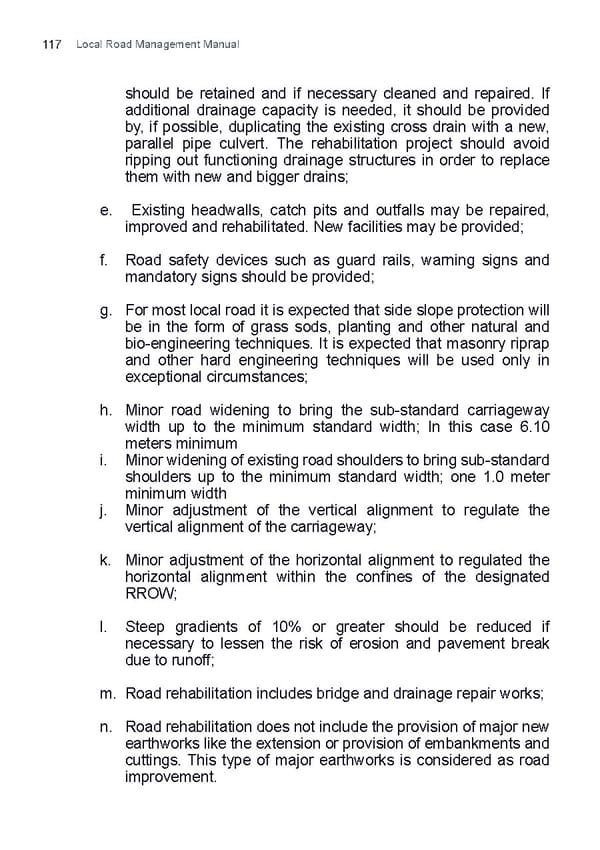117 Local Road Management Manual should be retained and if necessary cleaned and repaired. If additional drainage capacity is needed, it should be provided by, if possible, duplicating the existing cross drain with a new, parallel pipe culvert. The rehabilitation project should avoid ripping out functioning drainage structures in order to replace them with new and bigger drains; e. Existing headwalls, catch pits and outfalls may be repaired, improved and rehabilitated. New facilities may be provided; f. Road safety devices such as guard rails, warning signs and mandatory signs should be provided; g. For most local road it is expected that side slope protection will be in the form of grass sods, planting and other natural and bio-engineering techniques. It is expected that masonry riprap and other hard engineering techniques will be used only in exceptional circumstances; h. Minor road widening to bring the sub-standard carriageway width up to the minimum standard width; In this case 6.10 meters minimum i. Minor widening of existing road shoulders to bring sub-standard shoulders up to the minimum standard width; one 1.0 meter minimum width j. Minor adjustment of the vertical alignment to regulate the vertical alignment of the carriageway; k. Minor adjustment of the horizontal alignment to regulated the horizontal alignment within the conifnes of the designated RROW; l. Steep gradients of 10% or greater should be reduced if necessary to lessen the risk of erosion and pavement break due to runoff; m. Road rehabilitation includes bridge and drainage repair works; n. Road rehabilitation does not include the provision of major new earthworks like the extension or provision of embankments and cuttings. This type of major earthworks is considered as road improvement.
 LRM Manual CMGP Page 116 Page 118
LRM Manual CMGP Page 116 Page 118